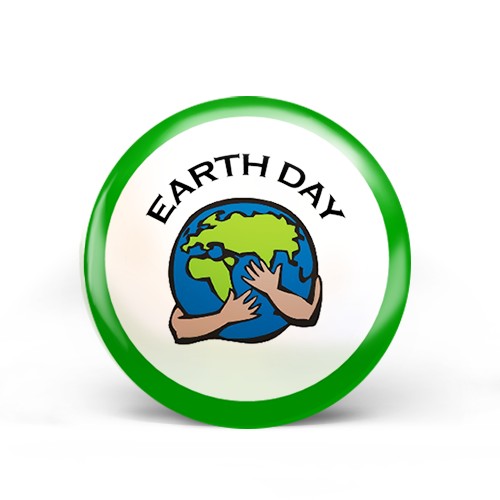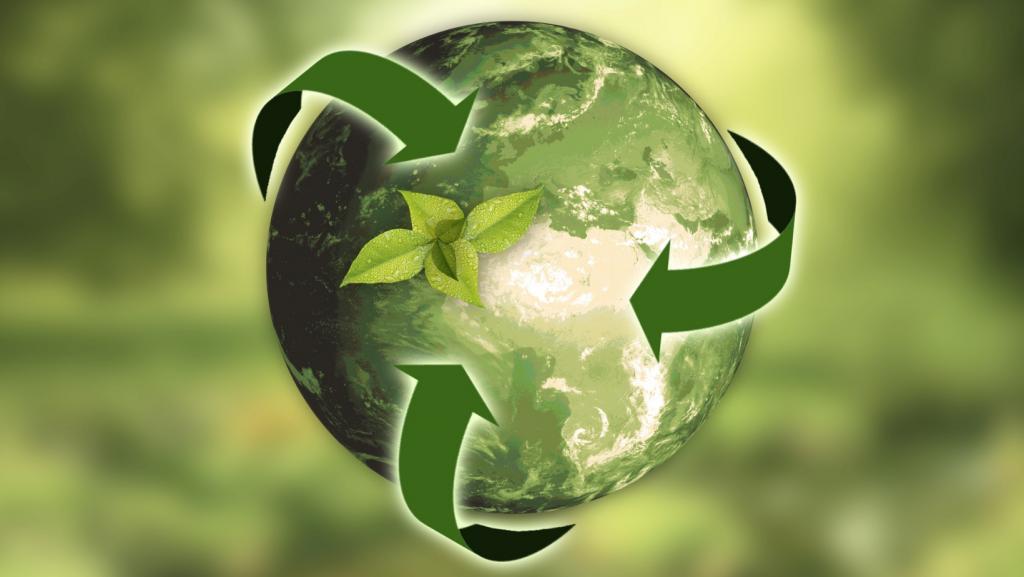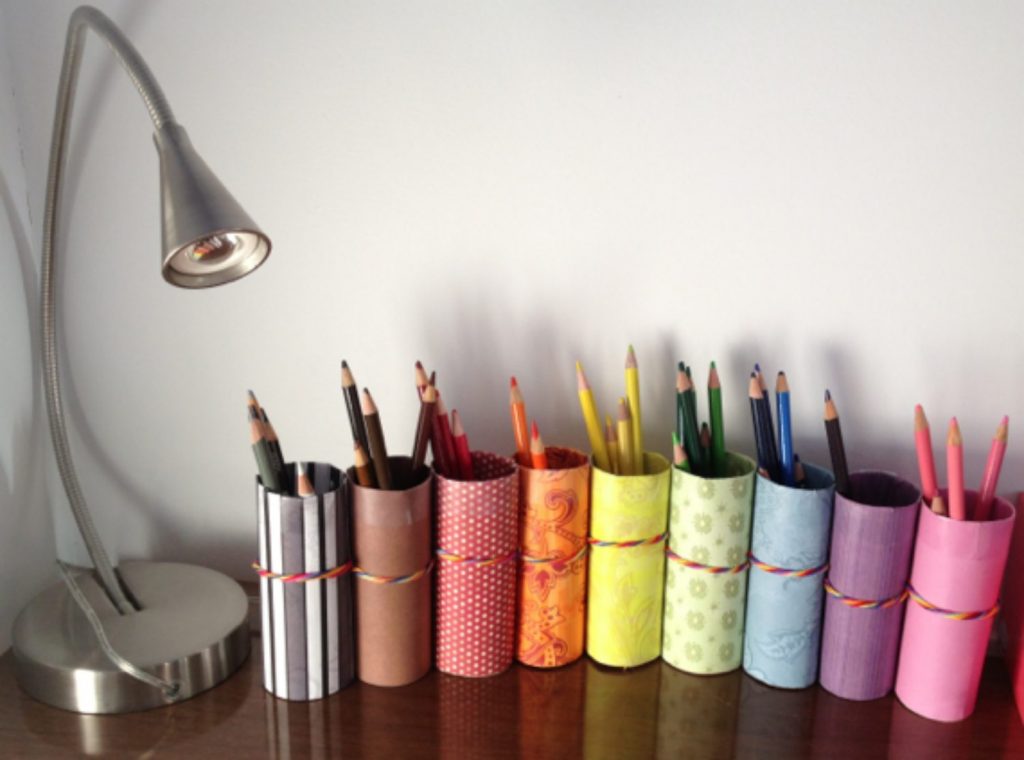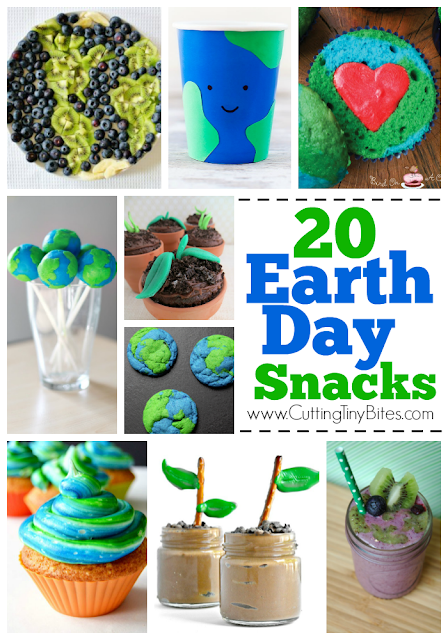Earth Day – Unit Study and Badge Resources
Earth Day is celebrated every year on April 22 to increase public awareness of the world’s environmental problems. The resources below will help you earn your Earth Day badge as you learn more about this holiday, its purpos,e and ways you can celebrate it. Other badges you may wish to earn alongside include:

- Recycle badge
- Leave No Trace Badge
- Zero Waste Badge
- Compost Badge
- Conservation Badge
- Renewable Energy Badge
1. What is Earth Day and How Is It Celebrated?
Earth Day is an international holiday that focuses attention on environmental issues around the globe. Earth Day began in 1970 in the United States, but since then has exploded to impact 192 different countries. According to Earthday.org it is now “widely recognized as the largest secular observance in the world, marked by more than a billion people every year as a day of action to change human behavior and create global, national and local policy changes.” Visit the official Earth Day website for the complete history of this unique holiday.
To celebrate Earth Day, organizations from around the world hold annual summits that address different environmental issues. The official Earth Day summits can be found on the EarthDay.org website. Local communities celebrate with festivals or fairs that focus on booths and entertainment that provide information and activities to help keep our planet clean and healthy.
To Do: Familiarize yourself with the history of Earth Day and then find out how your local community celebrates. Do they have a fair or festival? Are there any summits seminars, or webinars? If possible, attend one or more events.
To Do: Print out the world map from Maps International and color in as many countries as you can that celebrate Earth day. Visit the Earth Day website to see a live map of events around the world.
(Fulfills Preschool requirement #1, Level 1 requirement #2 and Level 3 requirement #3)

2. Make an Up-Cycled Craft
Up-cycling is defined as reusing discarded objects or materials in such a way as to create a product of higher quality or value than the original. One way to reduce trash is to upcycle items rather than throwing them away, giving them new life and purpose. Try this simple upcycle craft and turn discarded cannisters into decorative containers.
Supplies Needed:
- Large cardboard cannisters such as old hot cocoa containers or chip cans.
- Duck tape in coordinating colors and patters.
- Thin decorative or solid color tape
- Stickers
Measure the circumference of your can. Starting at the bottom cut a piece of duck tape 1/4″ longer than the circumference and carefully wrap the base of your can, overlapping the ends. Do the same from the top of your can. work inward, alternating top to bottom, until you have a final piece that wraps the remainder of the cannister that is still showing.
Use thin solid color or decorative tape to add accents to your can. You can also add decorative stickers if you wish. Use the cannisters to store items around your home.
For a variety of easy upcycle craft ideas, visit the Paper and Glue website.
(Fulfills Level 2 requirement #2)
3. Plan an Earth Day Party for Your Friends or Family
Earth Day is a holiday so celebrate it with family and friends. Using games, crafts, entertainment and fun food, plan an Earth Day party that celebrates the ideals behind Earth Day and educate your guests while having a fun time.
Items #7 give you instructions for some fun games to play while item #2 has some good craft ideas. Now you just need to plan for some yummy snacks. The first step is to keep your food choices earth friendly. Purchase organic fruits and veggies from your local farmers market or harvest from your own garden to make fresh fruit or veggie platters. If you are feeling creative, head over to the Paper and Glue website for 20 different fun Earth Day snack recipes.
(Fulfills Level 4 requirement #2)
4. The 5 R’s – Refuse, Reduce, Re-use, Repurpose, Recycle
The five R’s are an easy way to remind yourself to help keep our world clean and healthy. Using the five R’s in the correct order will also help to reduce the amount of trash that is thrown away. Find a way this week to use each of the five R’s. Here are a few ideas to get you started.
- Refuse – The first step in the five R’s is to refuse to use or buy wasteful, toxic or non-recyclable products. As you shop this week, find at least three items that you can refuse to use and use an alternate, more earth friendly product instead.
- Reduce – Even earth friendly alternatives such as paper food containers instead of plastic, take up room in our landfill. Find ways this week to reduce the amount of trash you throw away. For example you can bring reusable bags to the grocery store rather than using the paper ones provided, reducing the amount of bags thrown away.
- Re-use – Many items that people throw away can be reused. Yogurt cups and other plastic food tubs can be washed and re-used as food storage. Plastic bags can be re-used many times before they become to worn and must be recycled. Before throwing things away this week, think about ways they might be able to be reused instead.
- Re-purpose – While some items such as used soup can, cannot be used for its original purpose, they can be repurposed or up-cycled into something new. Instead of throwing something away, find a way to repurpose it. Visit the Simplemost.com for 11 Genius Ways Reuse Toilet Paper Tubes.
- Re-cycle – Finally if you can’t refuse, re-use or re-purpose something at least recycle it if at all possible. According to DoSomething.org, the EPA estimates that 75% of the American waste stream is recyclable, but we only recycle about 30% of it. Find out what is recyclable in your community and try to recycle as much as possible.
(Fulfills optional requirement #3)

5. Clean Up Your Community
Get proactive and help clean up your own community. Choose an area that you notice has a lot of litter such as a park or walking trail. Make sure it is safe and stay away from busy roads, etc. Take before photos of the area, then clean up all the litter. Take after photos to show how different it looks with no more litter or garbage. Adopt the area and clean it up on a regular schedule. Show the before and after pictures to members of your community to encourage them to choose a location of their own to keep clean.
(Fulfills optional requirement #4 and #12)
6. Preventing Litter
Cleaning up litter is good, but preventing litter in the first place is even better. Brainstorm with friends and family and come up with at least 5 ways you can help prevent litter. Then make a poster about litter prevention and post it in a public place to inspire others.
(Fulfills optional requirements 10 and 11)

7. Earth Day Games
Play or teach a game to a group of your choice that promotes litter control and/or environmental protection such as Backyard Trash or a Trash Scavenger Hunt or Race.
Backyard Trash
Supplies:
- Long rope
- Old newspaper, junk mail, office paper or other paper crushed in paper balls. The more the better
To play backyard trash, you will need a large floor space or outdoor area. Stretch a rope all the way across the center of the space dividing it into two equal areas. In the center of each area place an equal pile of paper balls. Divide the players into two teams, one on either side of the rope. On “go!” each team tries to toss all their paper balls onto the other team’s side. The goal is get all the trash out of “my backyard” and into the other teams. Play continues for 2-5 minutes. On “Freeze!” all players must freeze and no more balls may be thrown. Count the balls on each team’s side and the one with the fewest balls wins. At the end of play discuss how much trash is still present. Does it really matter whose backyard it is in? Like the game, just because we throw trash away and there doesn’t seem to be any littering our backyard, the trash still had to go somewhere. Discuss the role of landfills and why just getting the trash out of “my backyard” may still be harmful to the earth.
Trash Scavenger Hunt, Bingo or Race
Supplies:
- Trash bags
- Gloves
Find a safe area in your community that needs litter removal. Give each participant a trash bag and gloves. Make sure to go over safety instructions before beginning such as to never pick up needles or other dangerous items. For a trash scavenger hunt, have a list of typical trash items that might be found such as a cigarette butt, a food wrapper, a plastic bag, etc. For Bingo, list the items on a Bingo card and randomize where they are placed on each card. As participants pick up trash, have them mark off the items they pick up. Winner is either the person with the most items on the scavenger hunt or the first to yell Bingo! For Trash race, see who can pick up the most trash in 5 minutes.
(Fulfills optional requirement #13 or requirement #14)

8. Interview an Expert
Trash doesn’t just pick itself up. Learn who cleans three specific areas in your community, such as roadways or parks. Do they get paid or do they volunteer? Interview someone who helps to clean areas of your community. Examples might include:
- Park Ranger
- Park Maintenance Crew
- Highway technician or crew member
- Street Sweeper
(Fulfill optional requirement 8)
9. How Does Litter Harm Wildlife?
The negative impacts of trash on wildlife are many. According to the EPA, ” It has been estimated that plastic marine debris adversely affects at least 267 species globally, including 86% of sea turtles, 44% of seabirds, and 43% of marine mammals. The most common threats to wildlife include both physical hazards from ingestion and entanglement, and toxicological threats from ingestion of contaminants attached to and trapped within plastic particles.” As trash accumulates, it can change habitats causing species who rely on those habitats to decline. Chemical contaminants can accumulate in high concentrations and become ingested by wildlife, reducing their health and passing on those contaminants to humans as well. Many animals are in physical danger of simply becoming entangled in discarded fishing line, soda rings, or other debris that can kill or maim them.
Choose a species local to your community and find out how litter and trash effect it. Then come up with a plan to help. You might choose to keep a local habitat clean of debris, or educate others on the environmental damage done by litter. Follow the 5 R’s listed above to reduce your own trash impact in your area.
For more information visit the EPA website.
(Fulfills optional requirement #15)
Follow our Facebook page for daily badge of the week resources. For planning purposes you can see which badges will be featured on our badge of the week calendar. You can also sort and search articles by topic on our main blog page. If you are not already a member, check out our membership pricing page.








